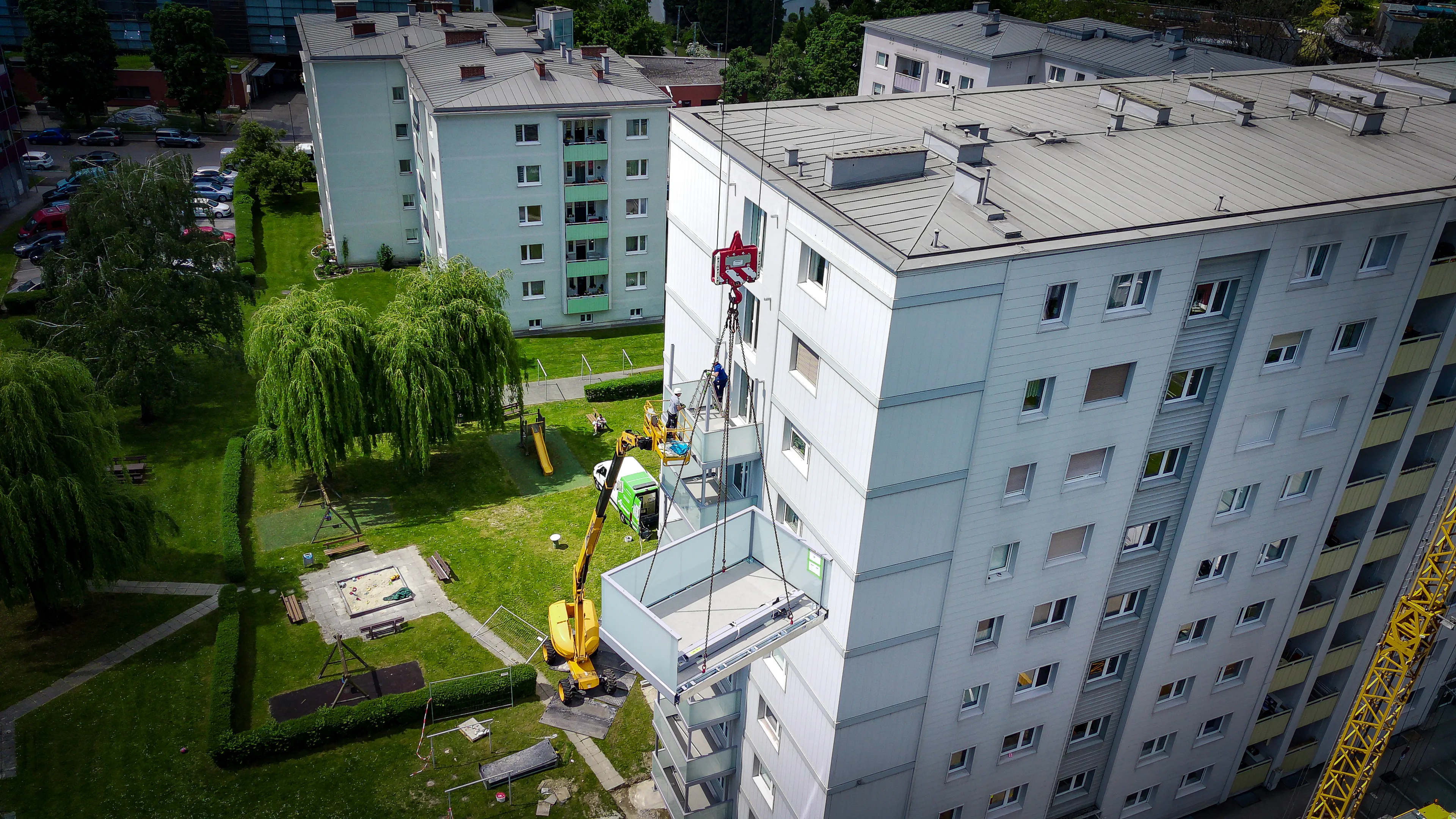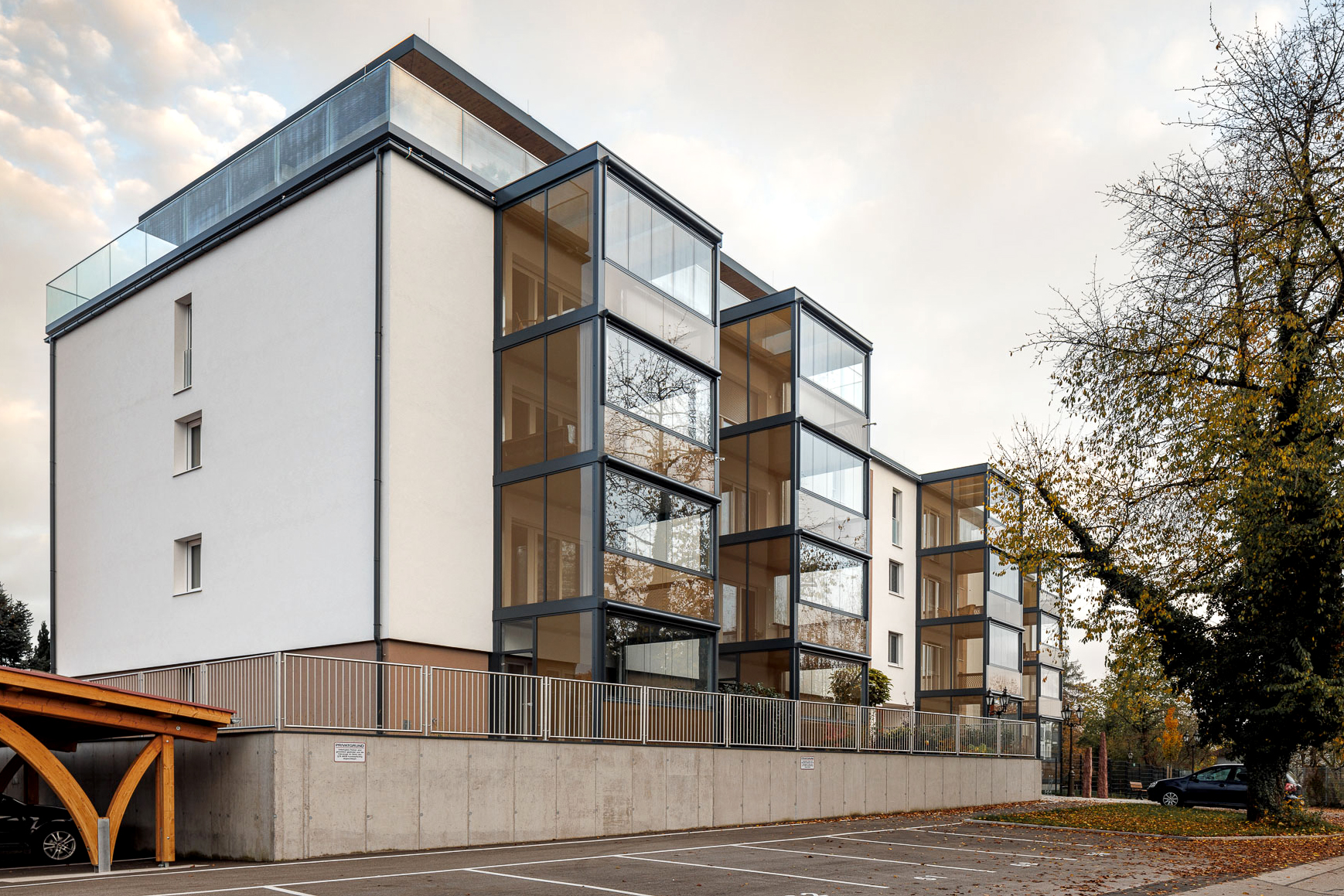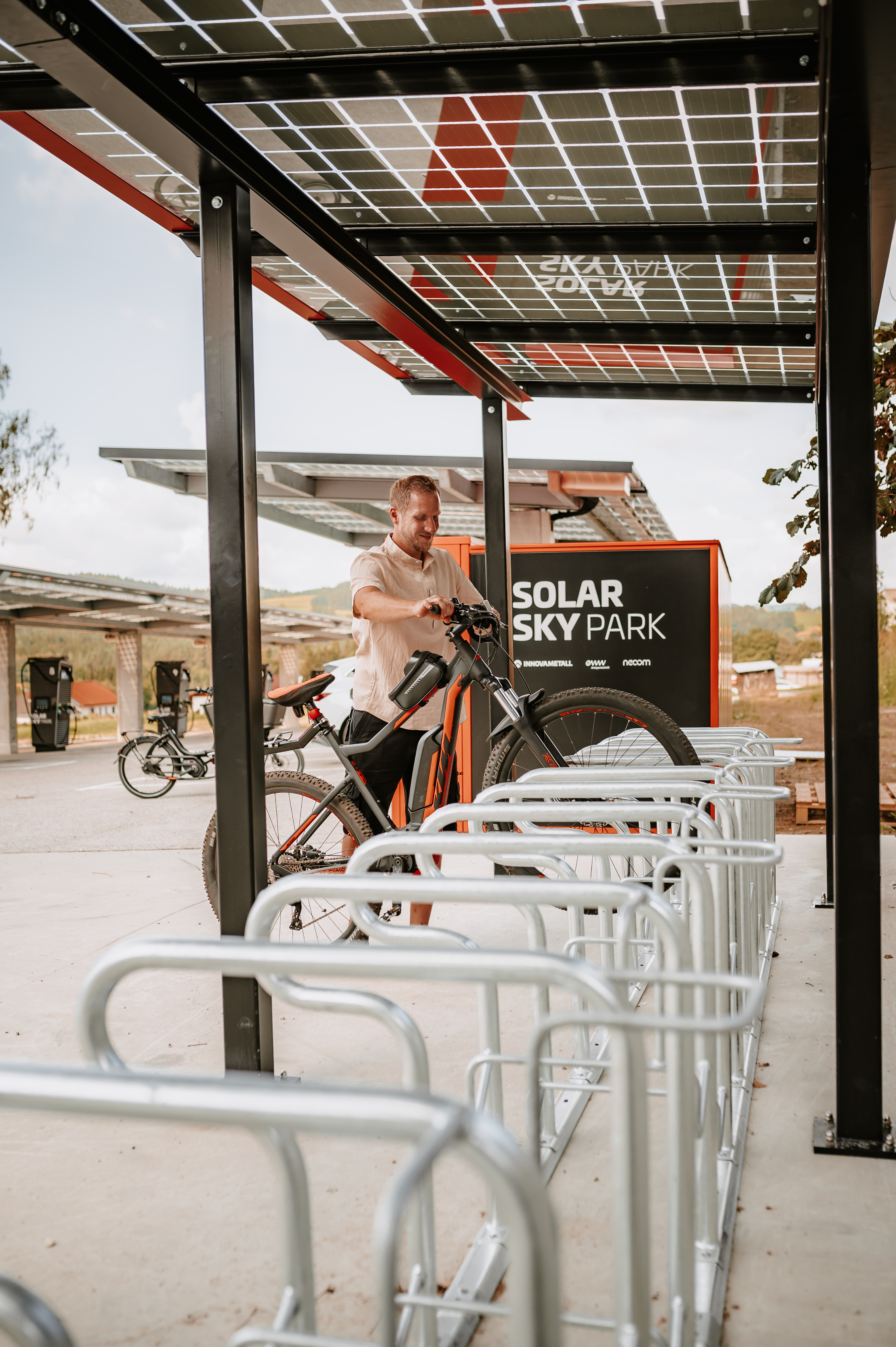The downsides of traditional balcony renovation
- High time and cost expenditure
- Construction schedule dependent on weather conditions
- Significant disturbance for residents
- Limited design options
- No sustainable extension of service life if the structure is already damaged
Technical and economic advantages:
- Short installation time: Minimal construction time reduces on-site disruption.
- Cost efficiency: Savings through the elimination of extensive concrete work.
- Weather-independent installation: Dry construction method with no curing times.
- Custom balcony sizes: Freely scalable geometry depending on the building structure.
- Maximum durability: 50+ years. The railing can be replaced at any time thanks to modular design (e.g. upgrade to PV balcony, storm damage, etc.).
- Manufactured in Austria: With CO₂-reduced production.
- Planning reliability: Serial production, clearly defined processes, certified systems.



